

|
|
John loves knots and would like to share a few with you - These knots have been chosen because they are useful, if not essential, for kite makers and flyers. All kite makers and flyers use knots. We use the ones we know and most of us know that there are some knots which could be quicker or easier or safer or more elegant or more easily undone than the ones we sometimes use. We know this because we botch and tie the most horrible tangles to be quick and Who wants to be fiddling about when the most important thing is to have your kite up and flying, anyway? THERE IS A BETTER WAY! I would like to make some suggestions, pass on some knots which may be useful and invite others to share theirs. Here are some which I have found useful: To tie the bridle onto a Fighter, use the LOBSTER BUOY HITCH see video demonstration 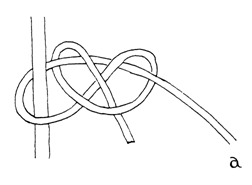
From the front of the kite, pass the line through the covering, around the spar and back out. Then over, under, through and through Pull a to tighten For all I know this knot is just as good for larger kites. I've never had one come undone It is a pretty useful general purpose knot. Use it to tie your flying line to the ring on a swivel and ...and ... AND if you take a loop it can be slipped to give a quick release SLIPPED LOBSTER BUOY HITCH 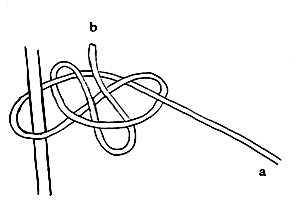
Pull a to tighten Here is a knot which is very useful for tying your flying line to an anchor (say a dog stake) see video demonstration 

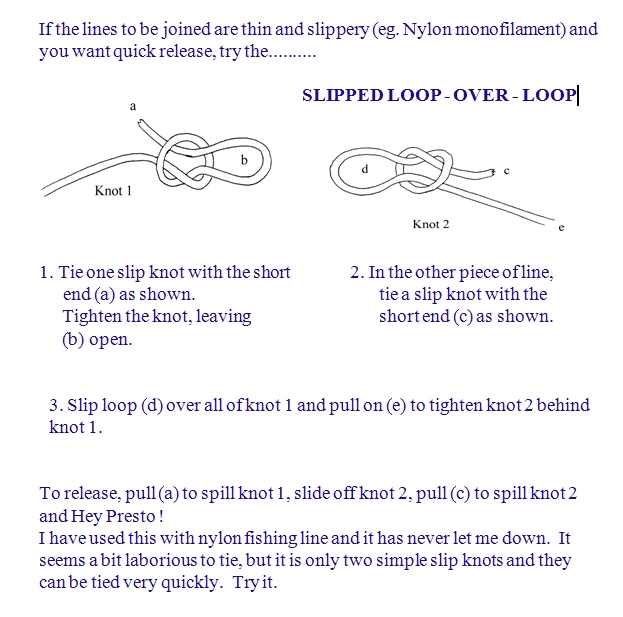
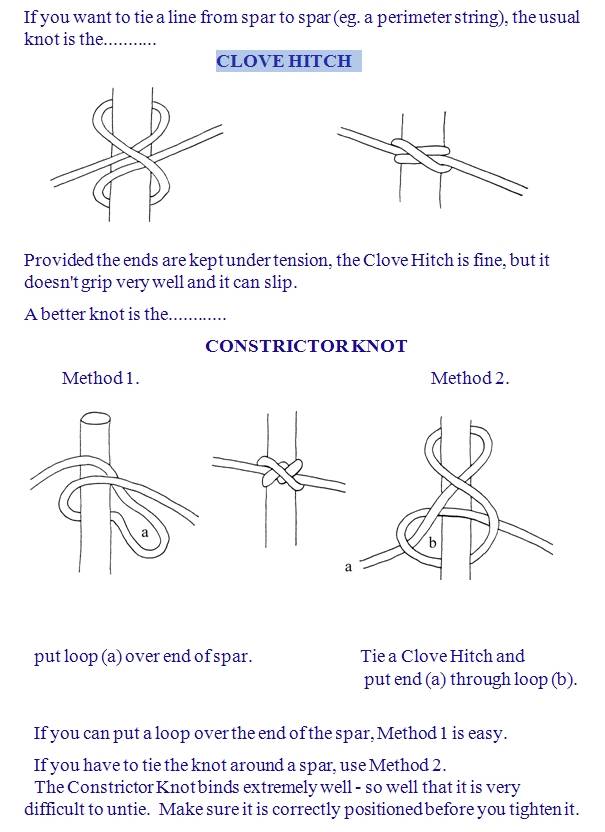
The STRANGLE KNOT (see video demonstration) works just like the Constrictor knot I use the Strangle Knot because I find it easier to remember Here, the two can be compared: 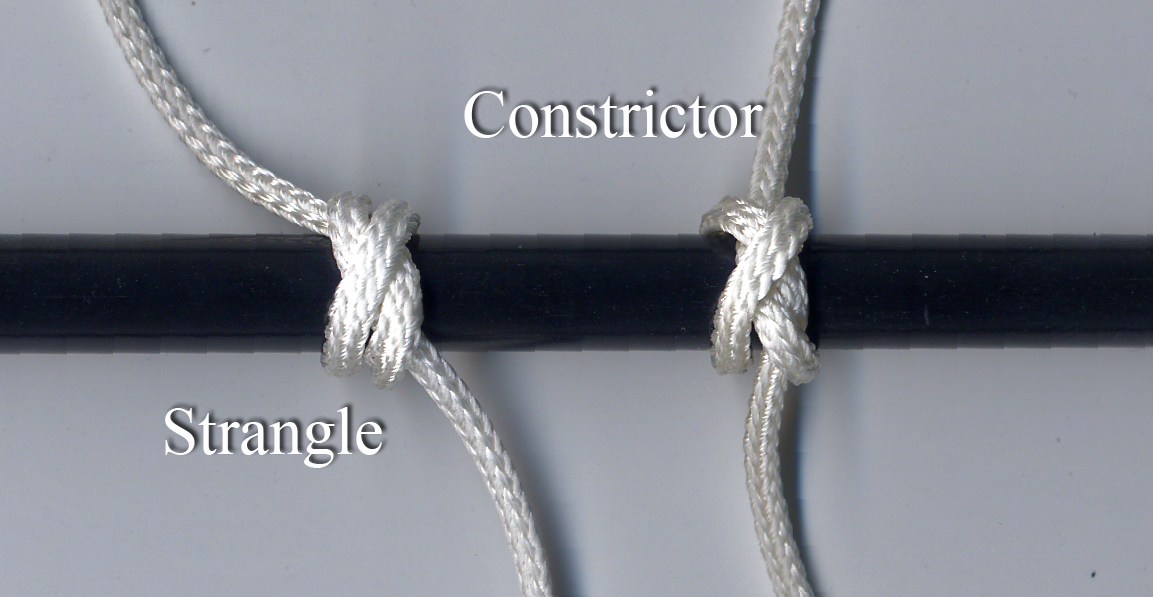
--------- 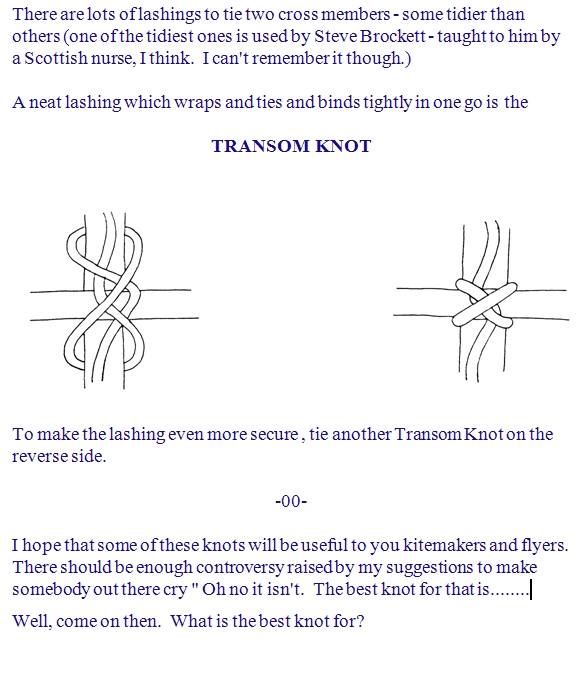
Here is an article I wrote many years ago but may still retain some interest The More or Less Loop There are times when we want to lengthen a line or to shorten it Perhaps the line will be part of a multi-line bridle or it will be a tensioning line for a bow At a Wroughton festival, I saw Rummings the Elder closely examining a knot with a view to learning it so that he could put it into service with his kite Seeing this, I naturally poked my nose in and tried to learn about this miracle knot Later, an American gentleman called Dan gave the knot three names, one of which was the Tarbuck Knot Here it is: 
To tie the Tarbuck knot, form a loop and wind the end around the inside of the loop a few times (the smoother the line, the more turns you need but three to four is usual). Bring the end out through the loop, put it over the standing part and form a half-hitch. Lo, you have a Tarbuck knot. Pull on the loop and the standing part. If the knot has been firmly drawn up, then the loop is as firm as if you had tied a Bowline But, and here is the magic, the size of the loop can be adjusted by sliding the knot along B-C We have an adjustable loop which can be put to a multitude of uses ------- When I went home after the festival, I played around with the Tarbuck knot and as often as not, I failed to get it right. The mistakes, sometimes easier to remember than the genuine knot, nearly always worked as well The Tarbuck is but one member of a family of knots that achieve the same purpose Here are two others: If, after bringing the end out through the loop. it is put under the standing part, the knot seems to work just as well This knot can be thought of as a Magnus Hitch tied with the end onto the standing part: 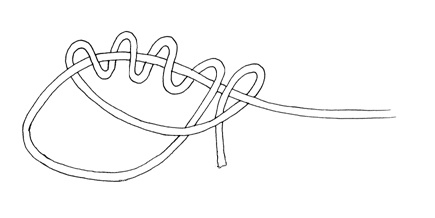
If, after winding the end around the inside of the loop, the end is brought around the loop and then tucked back inside the last wind, we get another adjustable loop: 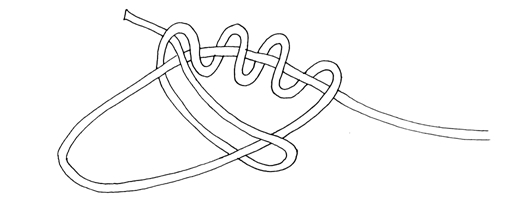
I discovered this one, only to find that it had already been invented (fairly recently, as knots go). Because it works very well and because I can easily remember it,this is my favourite. ----- The method of winding around the inside of the loop is the basis of the above knots. Another family exists where the end is wound around the standing part outside the loop and a half-hitch is put inside the loop. The ADJUSTABLE JAM HITCH is such a knot: 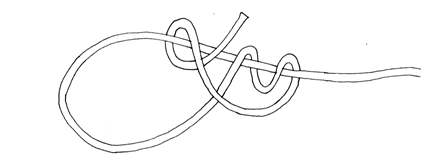
Because it slips in smooth line, it won't serve our purpose, just add another couple of turns at the start of the knot: 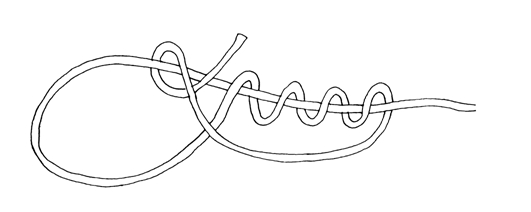
and it works well. Generally, any hitch which serves to attach one line to another such that the first will not slip on the other when pulled lengthwise (eg the Magnus Hitch) can be used to form an adjustable loop. I give one such example which is based on the SLACK LINE HITCH: 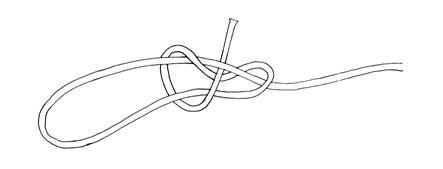
Again. for smooth line, add another turn or two at the start ------- Finally, here is one that I can't (yet) find in the books - Until I am shown that it has been done before, I propose to call it mine! It works very well indeed. ------ So, there are a few ideas for adjustable loops. There are probably thousands more Try a few and settle on your favourite - Your bridles and bows will never be better! |

| 
|